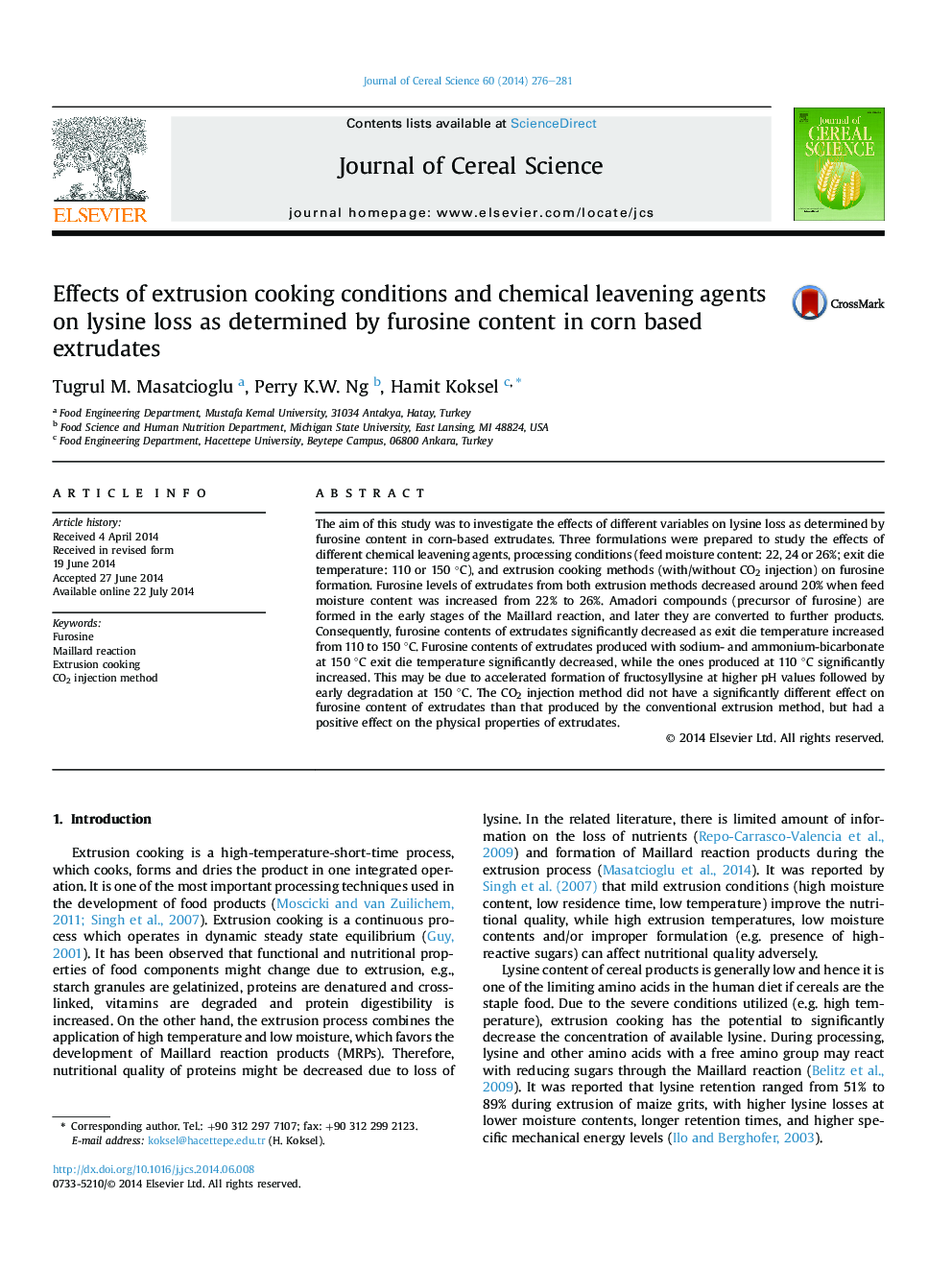| Article ID | Journal | Published Year | Pages | File Type |
|---|---|---|---|---|
| 4515838 | Journal of Cereal Science | 2014 | 6 Pages |
•Increased feed moisture had preventive effect on lysine loss during extrusion.•Furosine contents of extrudates did not change by CO2 injection.•CO2 injection method had improving effect on physical properties of extrudates.
The aim of this study was to investigate the effects of different variables on lysine loss as determined by furosine content in corn-based extrudates. Three formulations were prepared to study the effects of different chemical leavening agents, processing conditions (feed moisture content: 22, 24 or 26%; exit die temperature: 110 or 150 °C), and extrusion cooking methods (with/without CO2 injection) on furosine formation. Furosine levels of extrudates from both extrusion methods decreased around 20% when feed moisture content was increased from 22% to 26%. Amadori compounds (precursor of furosine) are formed in the early stages of the Maillard reaction, and later they are converted to further products. Consequently, furosine contents of extrudates significantly decreased as exit die temperature increased from 110 to 150 °C. Furosine contents of extrudates produced with sodium- and ammonium-bicarbonate at 150 °C exit die temperature significantly decreased, while the ones produced at 110 °C significantly increased. This may be due to accelerated formation of fructosyllysine at higher pH values followed by early degradation at 150 °C. The CO2 injection method did not have a significantly different effect on furosine content of extrudates than that produced by the conventional extrusion method, but had a positive effect on the physical properties of extrudates.
